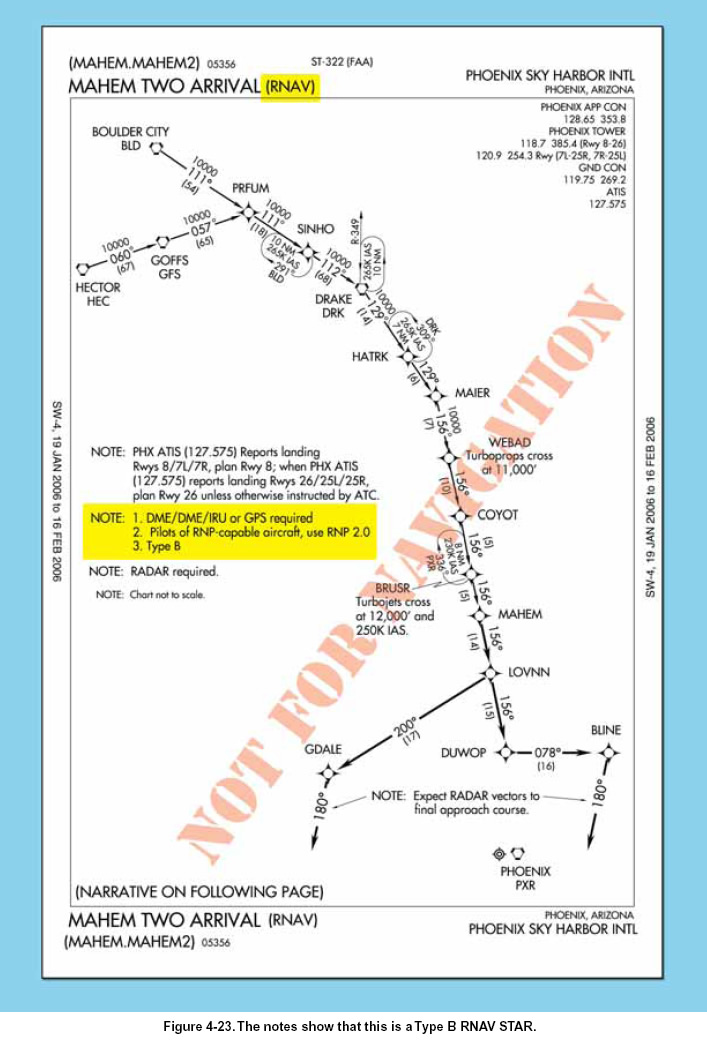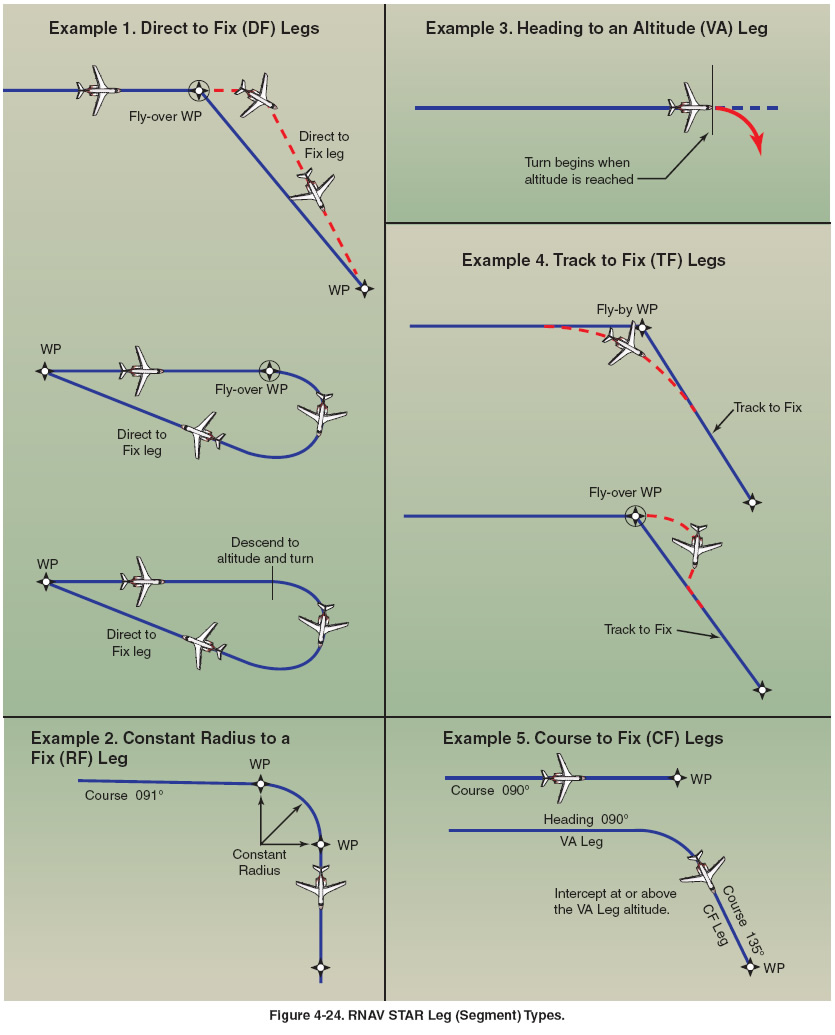 |
|
| INSTRUMENT PROCEDURES HANDBOOK |
|
RNAV STARS OR STAR TRANSITIONS STARs designated RNAV serve the same purpose as conventional STARs, but are only used by aircraft equipped with FMS or GPS. An RNAV STAR or STAR transition typically includes flyby waypoints, with flyover waypoints used only when operationally required. These waypoints may be assigned crossing altitudes and speeds to optimize the descent and deceleration profiles. RNAV STARs often are designed, coordinated, and approved by a joint effort between air carriers, commercial operators, and the ATC facilities that have jurisdiction for the affected airspace. RNAV STAR procedure design, such as minimum leg length, maximum turn angles, obstacle assessment criteria, including widths of the primary and secondary areas, use the same design criteria as RNAV DPs. Likewise, RNAV STAR procedures are designated as either Type A or Type B, based on the aircraft navigation equipment required, flight crew procedures, and the process and criteria used to develop the STAR. The Type A or Type B designation appears in the notes on the chart. Type B STARs have higher equipment requirements and, often, tighter RNP tolerances than Type A. For Type B STARS, pilots are required to use a CDI/flight director, and/or autopilot in LNAV mode while operating on RNAV courses. (These requirements are detailed in Chapter 2 of this book, under “RNAV Departure Procedures.”) Type B STARs are generally designated for high-traffic areas. Controllers may clear you to use an RNAV STAR in various ways. If your clearance simply states, “cleared Hadly One arrival,” you are to use the arrival for lateral routing only.
[Figure 4-23 on page 4-24]
Figure 4-24 on page 4-25 depicts typical RNAV STAR leg (segment) types you can expect to see when flying these procedures.
|

